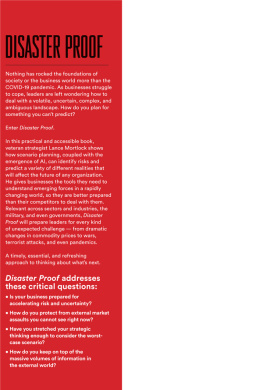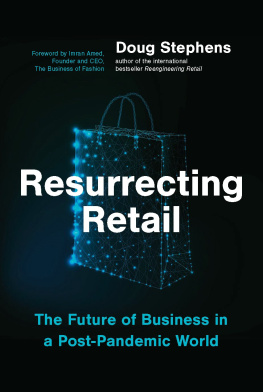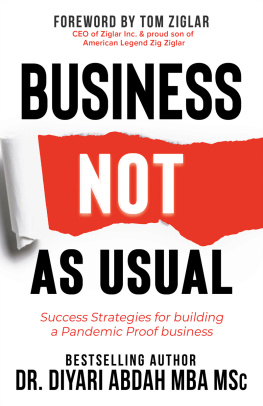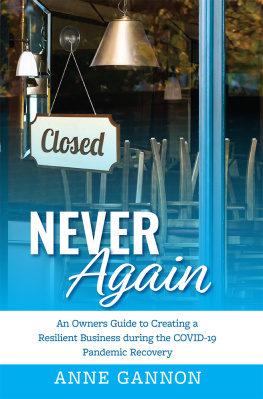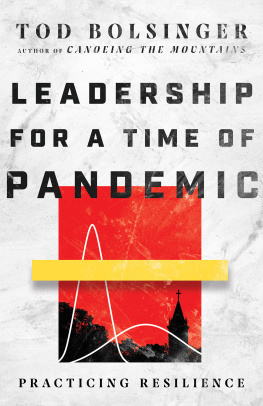

In todays volatile world, taking a wait-and-see approach will lead to disaster. Scenario planning is a way to make the future manageable.
MARK POWESKA, President & CEO, Hydro One
Lance Mortlock provides a thorough and comprehensive knowledge base to position organizations for success under any conditions.
DR. JIM DEWALD, Dean of The Haskayne School of Business & Professor of Strategy & Entrepreneurship
COVID-19 will reshape global economies forever. This book helps all leaders prepare for that future.
TIM PENKETH, Founder & CEO, TheFutureEconomy.ca
The future is always uncertain and full of external risk; Disaster Proof offers a way to minimize that risk.
MARY MORAN, CEO, Calgary Economic Development
This thought-provoking book offers a strategic tool to leaders and organizations who strive to deliver exceptional focus and execution during unpredictable and dynamic times.
MURRAY BICKLEY, President & CEO, Sanjel Energy Services
Disaster Proof lays the foundation for any organization looking to build resilience in a complex world. The author makes envisioning, formulating, and executing scenarios an intuitive and dare I say fun process.
BOB SARTOR, President & CEO, Calgary Airport Authority
Challenges my preconceived one-dimensional notions of the future. It addresses the critical issue of preparing and leading an organization to be nimble and responsive by imagining potential outcomes from multiple external risk factors.
ROBERT MORGAN, President & CEO, Strathcona Resources Ltd
This essential guidebook reminds us that strategic management is the job of many in an organization but requires courageous thought leadership and a practical approach. Disaster Proof gives you tools to effect strategic change toward building a more resilient organization.
HELEN WELSEY, Chief Operating Officer, TECO Peoples Gas
A strategic planners must-read. Introducing AI to the strategic planning process addressed in this book is game-changing and deserves serious consideration.
DARREN YAWORSKY, Chief Financial Officer, Badger Daylighting
This book is a tremendous resource that provides a comprehensive understanding of this management practice and practical examples from experienced leaders. It helped me crystalize my thinking on how I will commit to this discipline going forward
STEVE PHILLIPS, Executive Vice President, The Co-operators Group
Provides business leaders with a pragmatic and powerful set of tools to navigate uncertainty and build organizational resilience by developing a critical organizational muscle: digitally-enabled agile scenario planning. An essential read for tomorrows leaders!
PAUL SELWAY, Chief Digital Officer, AltaGas
Lance Mortlock provides valuable lessons on business strategy at the most challenging time in the last 80 years.
RICHARD HASKAYNE, OC AOE, Canadian Businessman & Philanthropist
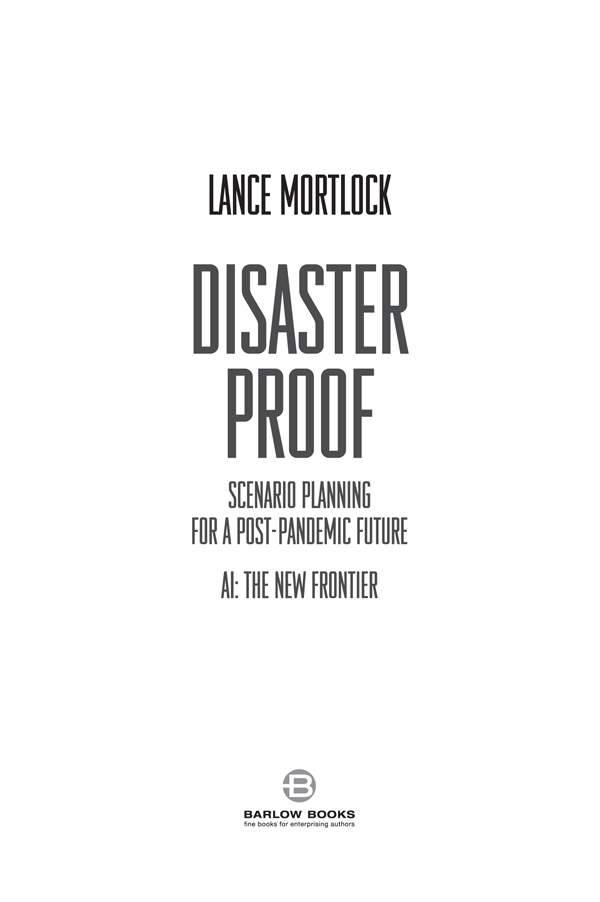
Copyright Lance Mortlock, 2021
All rights reserved. No part of this publication may be reproduced, stored in a retrieval system or transmitted, in any form or by any means, without prior written consent of the publisher.
Library and Archives Canada Cataloguing in Publication data available upon request.
978-1-988025-61-2 (hardcover)
Printed in Canada
Publisher: Sarah Scott
Book producer: Tracy Bordian/At Large Editorial Services
Cover design: Paul Hodgson
Interior design and layout: Ruth Dwight
Copy editing: Wendy Thomas
Proofreading: Eleanor Gasparik
Indexing: Karen Hunter
For more information, visit www.barlowbooks.com

| Barlow Book Publishing Inc. 96 Elm Avenue, Toronto, ON Canada M4W 1P2 |
For my wife, Elisabeth

There are three essential starting points for corporate strategy: global scenarios, competitive positioning and strategic vision. The first represents the world of possibility, the second the world of relativity and the third the world of creativity.
PIERRE WACK (EXECUTIVE AT SHELL WHO FIRST DEVELOPED SCENARIO PLANNING IN THE PRIVATE SECTOR)
Its hard to imagine a bigger upheaval to the world as weve known it than the COVID-19 coronavirus pandemic. Its not just a global public health emergency; the turbulence arising from the disease hits businesses, governments, consumers, and, as a humanitarian crisis, society at large. The World Banks 2020 Global Economic Prospects report predicts a 5.2 percent contraction in global GDP, the worst global recession in decades. Advanced economies are expected to shrink by 7 percent. On a human scale, anyone who has shifted from a workplace to a home office, especially if theyre also dealing with children, is well aware of just one of the myriad effects of COVID-19. What makes it more frightening is that, as of this writing, no one knows how long it will last, what its long-term consequences will be, nor what the so-called new normal will look like.
The virus originated in Wuhan, China, where the first lockdown occurred in January 2020, and spread globally from there. Its tempting to say a medical catastrophe as sudden and unanticipated as this could not have been foreseen by anyone, but thats only partly true.
In October 2019, two months before the first recorded case of COVID-19 in Wuhan, the Washington-based Center for Strategic and International Studies (CSIS) decided to study the impact of a global health pandemic. Samuel Brannen, head of the Risk and Foresight Group at CSIS, and Kathleen Hicks, senior vice-president of CSIS, had in the past advised government officials, CEOs, and other leaders on how to plan for unforeseen crises. For this planning exercise, they chose three scenarios: the use of artificial intelligence by the Chinese military; a major cyberattack and disinformation campaign aimed at the United States; and, after consulting with scientists, a fictional novel and highly transmissible coronavirus similar to SARS and MERS, two other coronaviruses responsible for outbreaks in 200304 and 2012 respectively.
For the health crisis, Brannen and Hicks gathered a team of experts drawn from the fields of bioscience, global health, national security, emergency response, and economics to stress-test the ability of the United States to respond to a global health catastrophe. The parallels to what actually unfolded were striking. Their scenario projected a 3.125 percent death rate. (As of August 2020, the World Health Organization announced that about 3.4 percent of reported COVID-19 cases had died.) Their scenario assumed governments would try short-term measures to slow the spread, such as travel bans and border closures, which would not be successful. In fact, these moves would create mistrust and impede the international cooperation so necessary to combat a pandemic. Like COVID-19, the fictional virus in their scenario spread through international air travel, and those infected by the virus showed no symptoms for a period of time, increasing the likelihood of human-to-human transmission. The experts working on the scenario model could see enormous economic
Next page
